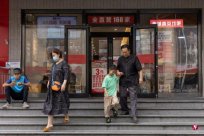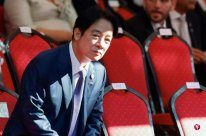
The opening of the Chinese economy in the second half of the year is unfavorable.The July macro data released by the National Bureau of Statistics on Tuesday (August 15) showed that the various economic indicators fell into a comprehensive decline.
In terms of production, the industrial added value in July increased by 3.7%year -on -year, an increase of 0.7 percentage points from June.In terms of consumption, the total retail sales of consumer goods in July increased by 2.5%year -on -year, which was lower than the 3.1%increase in June, and also the lowest growth rate since December 2022.
The role of investment in investment is also weakening. From January to July, fixed asset investment increased by 3.4%year -on -year, below 3.8%in the first half of the year, and has fallen to the lowest level since the end of 2020.The first seven months of real estate development investment fell by 8.5%year -on -year, a further decline from 7.9%in the first half of the year.
The officially announced a series of weak data, it also announced that it has suspended the release of youth unemployment data in a specific age group. In July, the national urban survey unemployment rate increased by 0.1 percentage points from June to 5.3%.
Macro data on Tuesday and trade, consumer and production prices, and financial data released in the past week have shown that the economic motivation of China's opening in the second half of the year is still insufficient.
Fu Linghui, a spokesman for the National Bureau of Statistics of China, said at a press conference that domestic demand is still insufficient, and economic recovery is still to be reinforced.In the next stage, we must focus on expanding domestic demand, boosting confidence, and preventing risks.
On the same day of the data release in July, the People's Bank of China launched 204 billion yuan (RMB, the same below, the same, S $ 40.8 billion) open market reverse repurchase operations and 401 billion yuan medium -term loan convenience (MLF) operation, one year's MLF bid interest rateFrom 2.65%to 15 basis points to 2.5%, the maximum decline since April 2020, and the seven -day reverse repurchase rate was reduced from 1.9%to 1.8%.
After the central bank has rejected the medium and short -term policy interest rates again, it failed to prevent the RMB from weakening the weak exchange rate of the US dollar.After the offshore renminbi -to -US dollar exchange rate broke the 7.28, 7.29, and 7.30 mark on Tuesday, it further fell below the 7.31 mark, and degraded to a new low since November last year.
Wen Bin, chief economist of China Minsheng Bank, and other published articles on the public account of the financial comment public account "Macro Fei" pointed out that the meeting of the Political Bureau of the Communist Party of China on July 24 emphasized "increasing macro policy regulation and control", Chinese ministries and local ministries and localitiesThe government has also introduced supporting policies, but the macro -control policy "either is still in the stage of brewing, or its strength is lower than market expectations." The policy effect has not been reflected.
Wen Bin and other people in the industry suggested that in order to prevent the decline in economic inertia, it is necessary to launch a steady growth policy as soon as possible and land on the ground as soon as possible to effectively reverse market expectations.
The executive director of the Global Economic and Marketing Research Department of Singapore, Global Economic and Market Research Director Quan Dejian told Lianhe Zaobao that economic data in July did not mean that China's economic prospects became bad, but the stimulus policy currently introducednot enough.He said that the savings of Chinese families have been rising.
He pointed out that because all data in July was lower than expected, it improved the urgency of policy response.He predicts that China's possibility of loosering in monetary policy is increasing. In addition, there is room to introduce more favorable policies for individual industries, boosting support for private consumption and resolving risks brought by local government debt.



